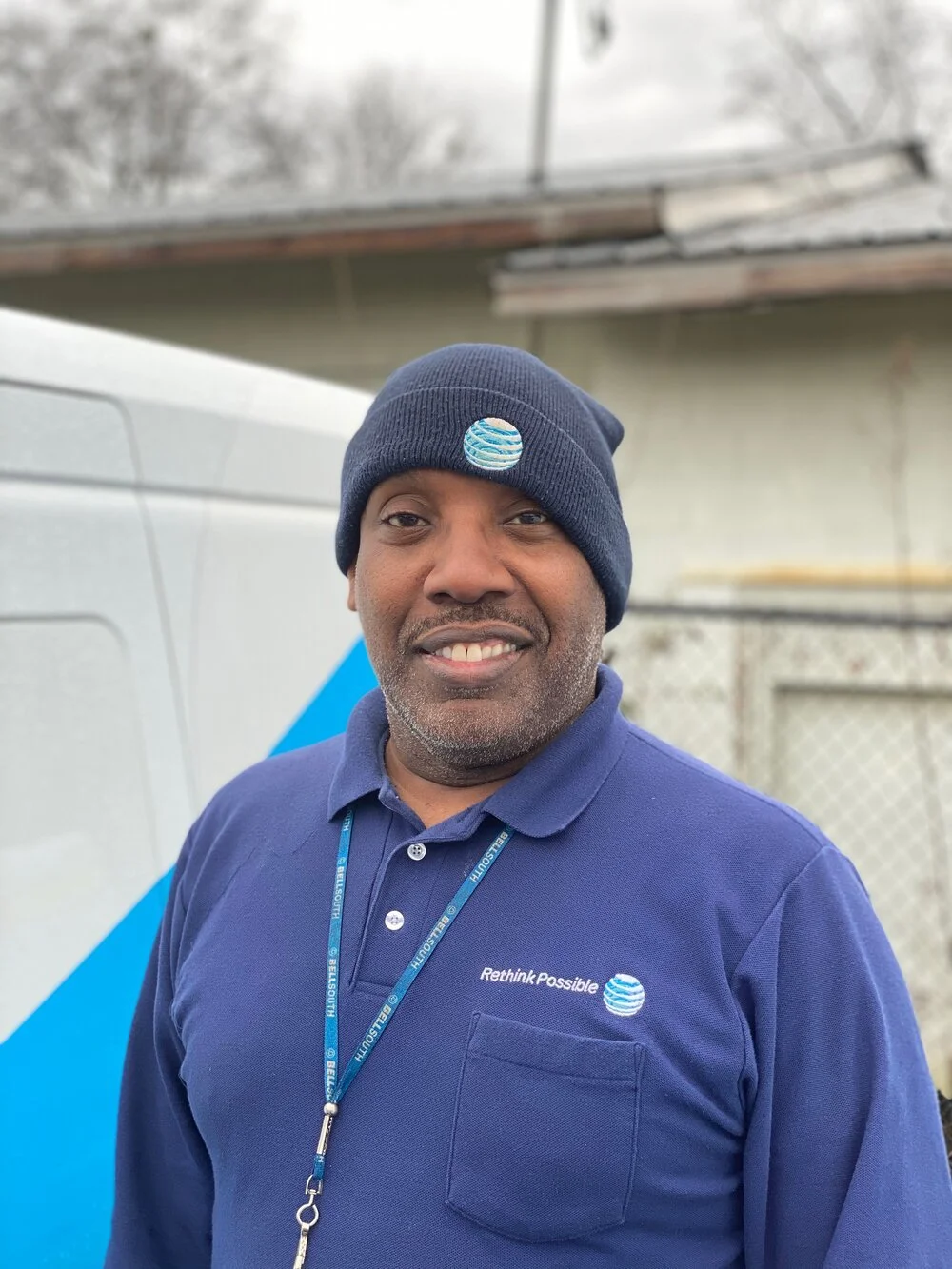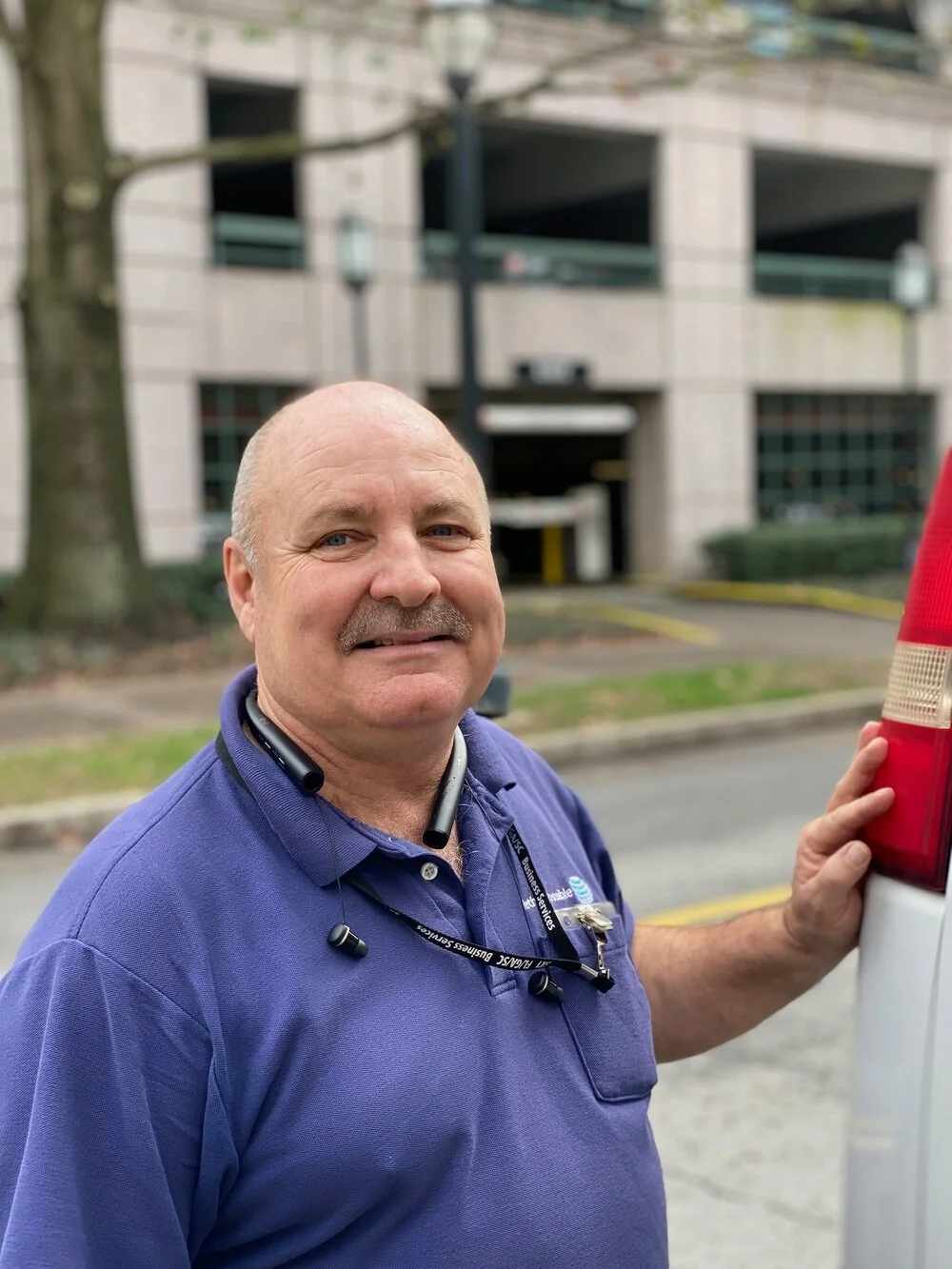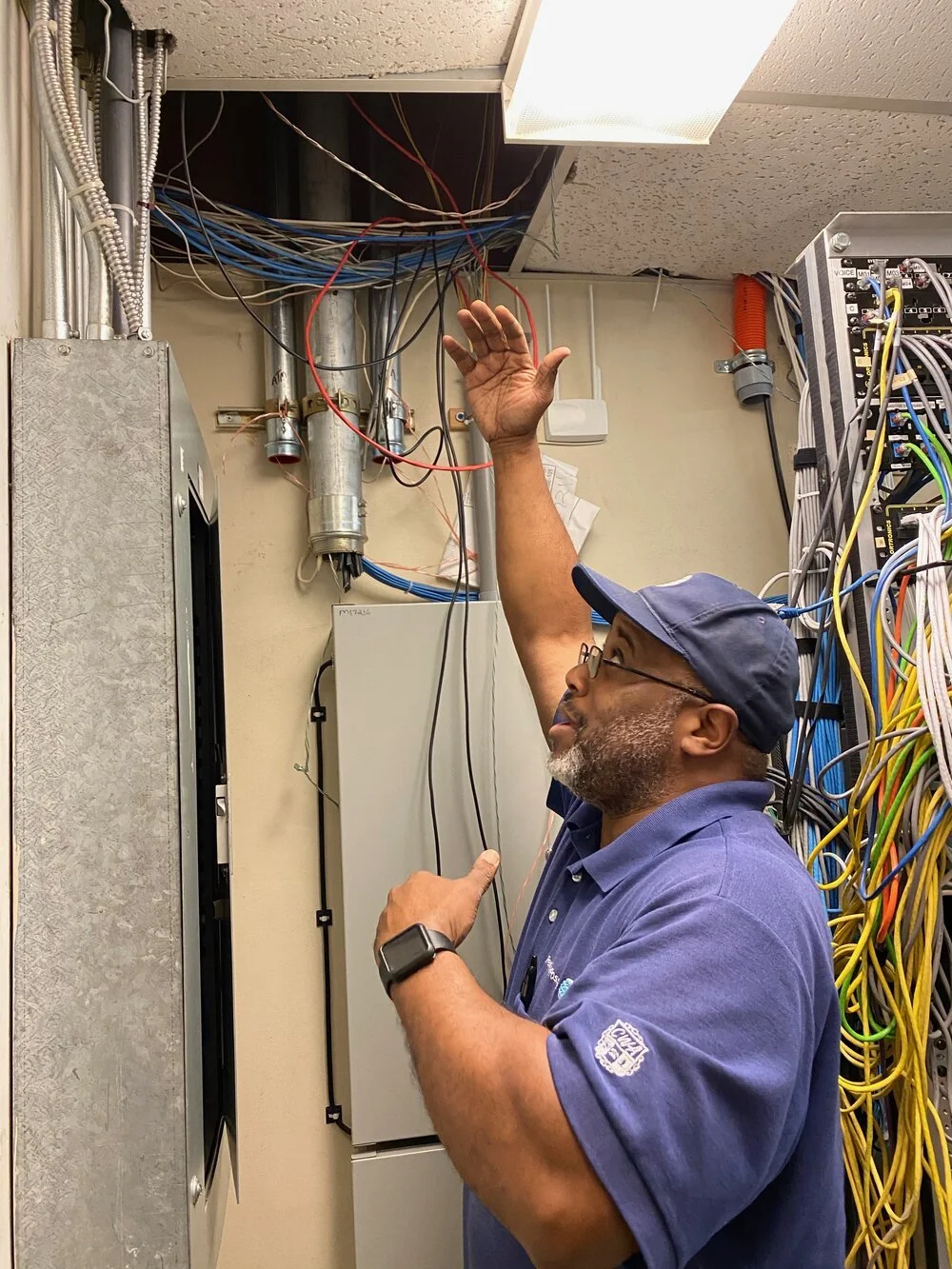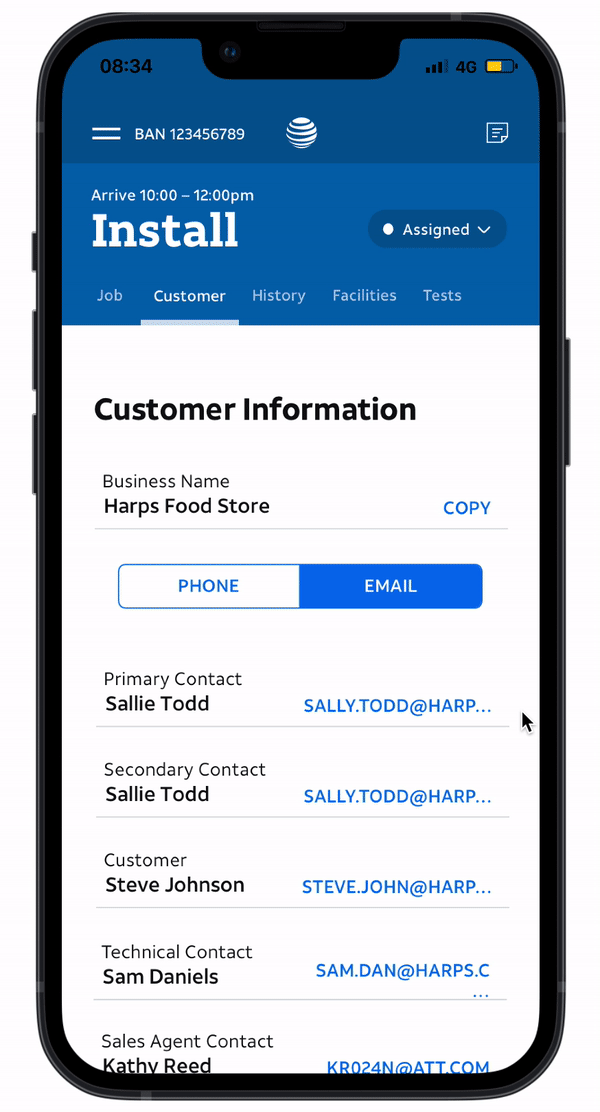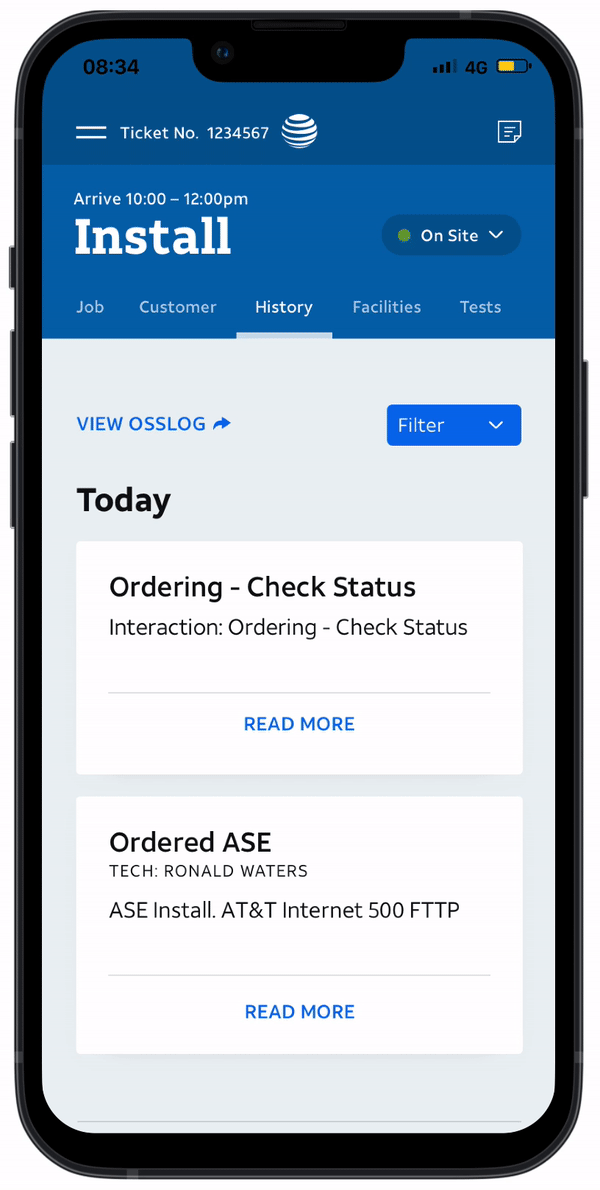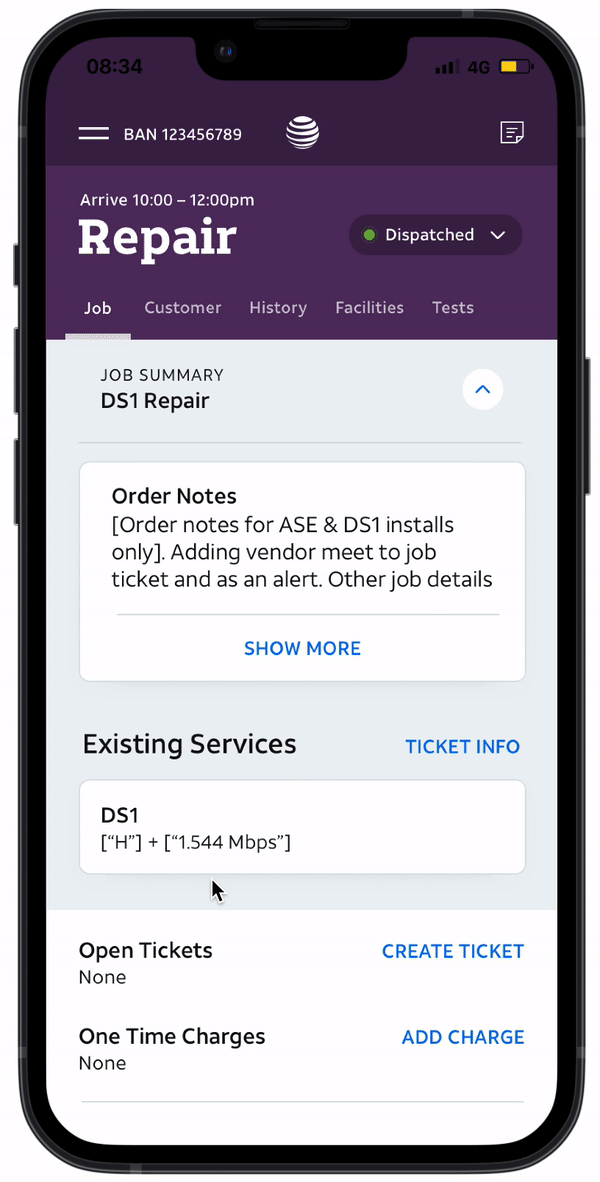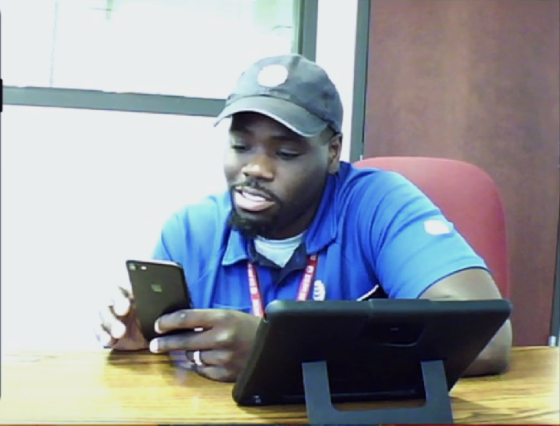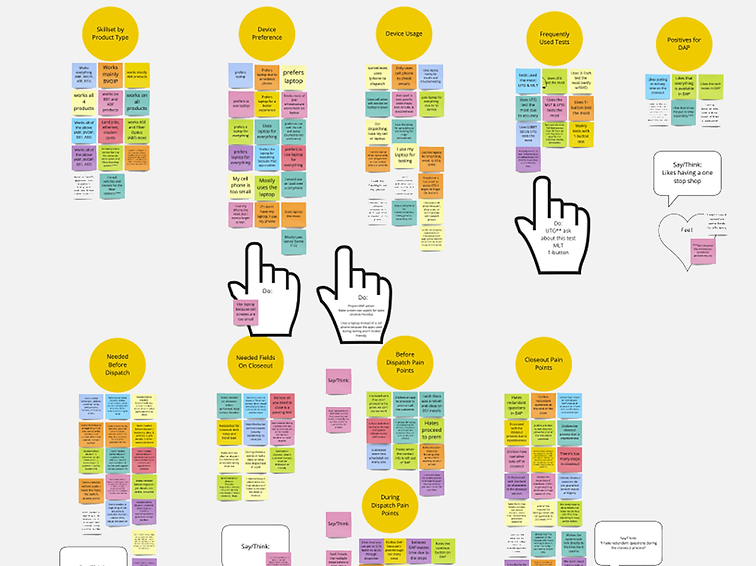
OVERVIEW
Atlas is an app for over 60,000 U.S based AT&T technicians that allows them to do their day to day job responsibilities. (Ask what Orca does and how it affects everyone)
Atlas is a tool for Field Service Technicians. They use it to install and repair internet and TV services for customers and small businesses. The app includes customer information, troubleshooting guides, and important tests that can be run on the customer's services. (Ask Auburn what is Orca)
Role
Lead Product Designer
Team
Product Designer
UX Researcher
Software Engineer
Scrum Master
Business Analyst
Tools
Figma
Sketch
Miro
Optimal Workshop
Timeline
2020 - 2022
WHO ARE THE AT&T TECHNICIANS?
AT&T Technicians are the backbone of AT&T, they connect customers across the United States to the latest tech and services in opportunities that are as wide as the open road. Efficient, effective, and happier technicians will help AT&T improve its bottom line while providing a better customer experience. (Who are the users of Orca and what do they do?)
Different types of techs have different job titles, work in different environments, and perform different services. Understanding these differences is a prerequisite for working with Atlas.
Hi, I’m Joe - a Wire/IEFS and Prem Tech
These techs may install and troubleshoot WiFi, TV services, wireline or fixed wireless internet, VoIP, and/or DIRECTV.Hi, I’m Aaron - a DTV Tech
There are two subtypes of techs who install and repair DIRECTV (DTV) dishes and cables:Hi, I’m a John - a ABS Tech
Technical Field Services (TFS) techs—also called core techs—can install and support all the services that prem techs do, with the exception of DTV. OPPORTUNITY SPACE
Technicians experienced job dissatisfaction which led to customer dissatisfaction because of the lengthy customer installs and repairs, due to unreliable workflows, linear processes while juggling more than 60 software tools which were clumsy and slow. (What was the issue with Orca, why were we doing this project)
AT&T, having acquired and expanded multiple different service offerings, has in turn, segmented their technicians. With the success of Atlas, the platform has been expanded to serve three different technician teams, initially targeting the low hanging fruit. What's is the most complex of them all.
The technicians who serve AT&T's business customers are called Business Services Technicians. Because of the complexity of their work, they have often been left behind in the company's tool advances, leaving them with inefficient technical processes.
DESIGN OPPORTUNITY
How might we help technicians start their day with confidence, whIle preparing them to best serve the customer?
I was able to contribute to the launch of more than 15 new end-to-end Atlas experiences during my time on the project, and these were the three that impacted users and the business most.
SOLUTION
ATLAS: A digital toolbelt for over 60,000 U.S based AT&T technicians that allows them to do their day to day job responsibilities.
Emailing necessary forms to customers after an installation
The homepage showcases recommendations and upcoming travel plans in a user's area added by other travelers. Users can join travel plans created by other travelers to enjoy the experience with others. Clicking on a plan will allow them to view the original recommendation as well as travel plans created by travelers to visit the spot.
Write and Save Job Notes from a customer’s installation or repair
The homepage showcases recommendations and upcoming travel plans in a user's area added by other travelers. Users can join travel plans created by other travelers to enjoy the experience with others. Clicking on a plan will allow them to view the original recommendation as well as travel plans created by travelers to visit the spot.
Adding a Spare
The homepage showcases recommendations and upcoming travel plans in a user's area added by other travelers. Users can join travel plans created by other travelers to enjoy the experience with others. Clicking on a plan will allow them to view the original recommendation as well as travel plans created by travelers to visit the spot.
PROCESS
Ok, but how did I actually get there?
In my first sprint, I focused more on designing an experience that addressed the pain points I found. In the second sprint, I transitioned my focus to making Trella more viable by spending more time thinking about the product strategy, go-to market strategy, and edge cases.
UX RESEARCH
I partnered with our UX Research Team to understand the challenges our users face, primary uses and how they see Atlas making a difference in optimizing pain areas, decreasing work time and giving them a seamless technician experience. (What type of research was done)
Subject Matter Expert + User Interviews
These techs may install and troubleshoot WiFi, TV services, wireline or fixed wireless internet,Affinity Mapping
There are two subtypes of techs who install and repair DIRECTV (DTV) dishes and cables:Site Map
After interviews I drafted this site map to determine the most intuitive hierarchy.
Interviews revealed 6 pain points in technician’s journeys (What were the pain points)
I conducted 5 interviews with millennials who had solo traveled in the past or who would like to solo travel in the future to understand their needs and frustrations. Through a synthesis, I was able to create a typical journey map of a solo travelers' experience and extracted travelers' 3 main pain points while traveling.
Long forms tie up their day.
Technicians must manually fill out a tedious Excel document with an average of 20 tabs. To add photos to the form, technicians take photos with their phones, email them to themselves, and then paste the photos into the Excel document.
Hard to find help when needed.
Business Services Technicians spend time searching for appropriate resources to help. The dispatcher is always contacted when the technician submits a helper ticket to ensure the proper help is assigned.
Juggle multiple software tools.
The tools are not integrated and therefore multiple links, swivels and steps are required to perform each action.
Inflexible tools
Prefer tools that are mobile friendly, but today they are too difficult to navigate on a phone.
Going in Blind
A site visit is often conducted before the technician is dispatched. During the site visit, much relevant information is gathered and documented, but none of it is shared with the dispatched technician.
Parking is often inconvenient & hard to find
Excessive time and money is spent finding and paying for utility parking in metropolitan areas.
“Last time, I parked down here and got booted twice”
OPPORTUNITY #1
How might we aid the discovery of unique experiences?
Solo travelers trust other solo travelers, so what if I could leverage that trust?
Solo travelers enjoy sharing their experiences on social media so that other solo travelers can benefit from their first-hand knowledge. So, why not leverage that behavior to create a collection of trustworthy recommendations added personally by solo travelers? To make the data more useful and digestible to users, Trella could curate the recommendations by categorizing them into categories that are more appealing to users.
My biggest learnings 👩💻
A deeper appreciation for a segment I had never considered before.
The feeling of social impact I got from the work I did this summer was unreal. Prior to this internship, I truthfully did not know much about hourly workers. After spending 3 months learning about this segment, I now have such a deep appreciation for these workers and I am so thankful and happy that I got to play a part in making a difference in their lives.
How to effectively lead cross-functional meetings
As an intern, it was hard for me to drive meetings, especially with cross-functional partners. I had to learn how to set and follow meeting agendas, stir conversations back to the agenda when needed, and decide action items needed from different cross-functions in order for me to progress on design. It was nerve-wracking to tell cross-functional partners what to do, but I quickly learned how important it was for the success of the project.
How to communicate complex ideas
The scope of my summer project was quite large. There was a lot of ambiguity, strategic considerations, and possibilities for this new feature. This challenged me to learn how to communicate complex ideas into easily understandable concepts and adapt my storytelling based on my audience.
